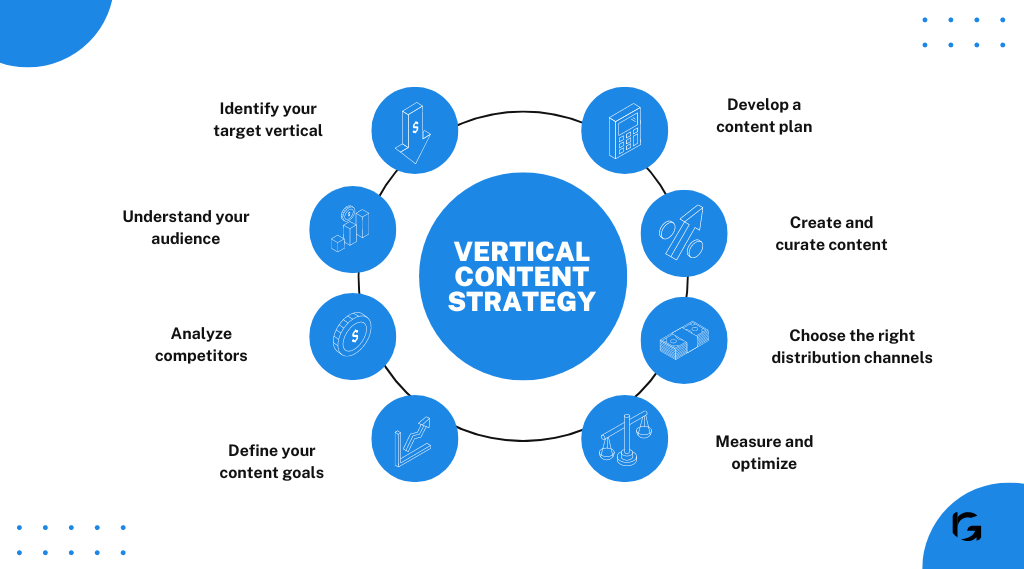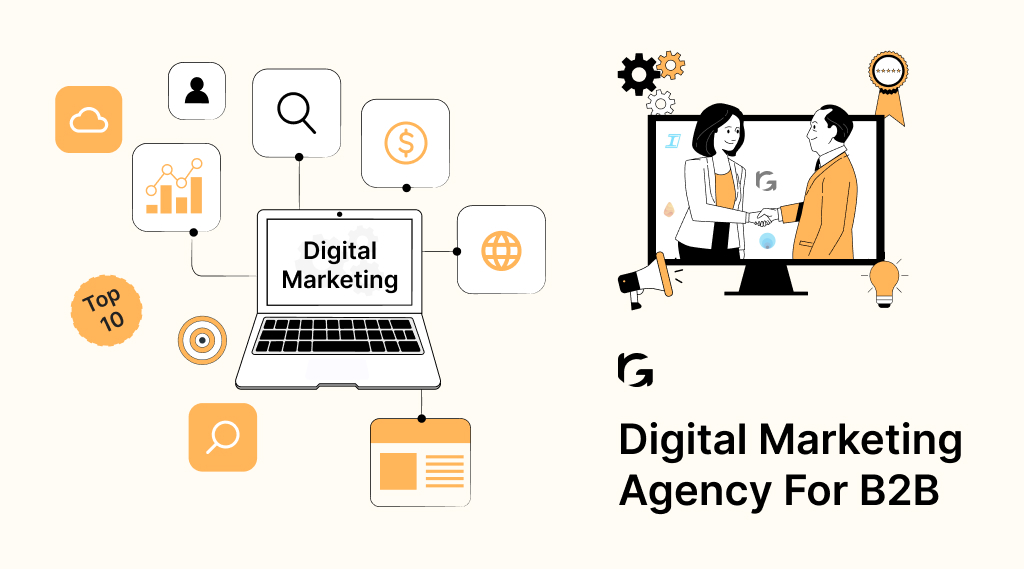The way we consume content is constantly changing. Gone are the days of bulky desktops and sprawling web pages. In today’s world, most of the population consumes content through mobile. To catch the attention of the audience through mobile, brands created a term called vertical content.
Vertical content is the future of the content industry. It helps in building deeper connections with the audience and usually targets specific group of people.
To know more about vertical content and how you can create one for yourself, continue reading more.
What is vertical content?
Vertical content is a type of content created to engage a niche audience within a particular industry or interest group. It’s focused on a “vertical” market, meaning it targets a specific group of people with shared interests, needs, or characteristics, rather than a general audience.
This focused approach ensures the content is highly relevant, useful, and appealing to those within a certain field or community. Vertical content delivers personalised experience with the help of information that is related to the user.
It is effective for businesses who want to establish authority in specific markets related to their target audience.
Using keywords related to the specific industry, topic, or audience segment helps enhance SEO, making it easier for the right people to discover this valuable content.
Why is vertical content important? 5 Reasons
Defining vertical content is very important. It helps in the creation of relevant content that is made specifically for the audience.
The benefits of implementing vertical content are endless.
Here are five key benefits of vertical content:
 1. Increased engagement
1. Increased engagement
2. Enhanced credibility and trust
3. Improved SEO
4. Higher conversion rates
5. Competitive differentiation
Let’s understand each one of them shortly.
Vertical content, aimed at specific industries or audience segments, is a focused strategy that enhances digital marketing by delivering highly relevant content. This approach yields several key benefits:
1. Increased engagement
Vertical content engages its audience effectively because it addresses their interests and needs. This leads to higher interaction rates, such as more time spent on content, increased shares, and active participation in comments, enhancing brand-audience relationships.
2. Enhanced credibility and trust
By providing specialized, insightful content, brands establish themselves as authorities in their niche. This expertise builds trust with the audience, making the brand a preferred source for information and solutions.
3. Improved SEO
Focusing on niche topics and keywords improves search rankings for those terms, leading to more targeted traffic. This strategy uses long-tail keywords, which attract more specific user with similar interest. .
4. Higher conversion rates
Content that resonates deeply with its intended audience and motivates them to take desired actions. Examples of such content include making a purchase or signing up. This direct appeal to the audience’s needs and challenges results in better conversion rates.
5. Competitive differentiation
Vertical content gives you a competitive advantage. It helps in standing out in your competitors. The more relevant content you create, the more your audience relates to you on a personal level. It also highlights your understanding of your niche.
This differentiation is crucial for attracting customers seeking specific solutions and sets the brand apart from generalist competitors.
Vertical content strategy not only builds stronger connections with targeted audience segments but also drives business outcomes. It also helps in better engagement, trust, online visibility, customer actions, and market positioning.
Vertical content vs horizontal content: 5 Key differences
Vertical content targets specific industries or audience segments with tailored information, while horizontal content appeals to a broader audience across multiple industries or topics.
And here are 5 key differences:
1. Target audience
Vertical content: Targets a specific audience within a particular industry, niche, or demographic, focusing on content that meets their unique needs and interests.
Horizontal content: Appeals to a broad audience across multiple industries or demographics, addressing general topics of interest that are not industry-specific.
2. Content focus
Vertical content: Delivers in-depth, specialized information or solutions related to a specific field or problem area.
Horizontal content: Offers broad, versatile content that covers a wide range of topics, appealing to general interests and knowledge.
3. Objective
Vertical content: Aims to establish authority and credibility within a specific niche, build deep engagement, and foster loyalty among a targeted audience.
Horizontal content: Seeks to maximize reach and awareness, attracting a diverse audience and introducing them to the brand’s broader values or offerings.
4. SEO strategy
Vertical content: Focuses on niche-specific keywords and long-tail phrases to attract targeted traffic with high intent, improving rankings in specific, often less competitive, search queries.
Horizontal content: Utilizes broad keywords and general topics to attract a wide range of search traffic, aiming for visibility across a variety of search queries.
5. Content depth and expertise
Vertical content: Provides detailed, expert-level insights and analysis, often requiring specialized knowledge or expertise to produce.
Horizontal content: Offers a more generalist view that provides introductory or overview-level information, accessible to a wide audience without requiring deep expertise.
These parameters highlight the strategic differences between vertical and horizontal content, emphasizing their distinct goals, target audiences, and approaches to content creation and distribution.
Vertical content strategy: How to create one in 2024?
Crafting a vertical content strategy enables brands to deeply connect with their target audience by addressing their unique needs, preferences, and challenges.

Here are the steps involved in a vertical content strategy:
- Identify your target vertical
- Understand your audience
- Analyze competitors
- Define your content goals
- Develop a content plan
- Create and curate content
- Choose the right distribution channels
- Measure and optimize
Let’s understand each step highlighting both the action and its importance.
1. Identify your target vertical
Choose an industry, niche, or audience segment aligned with your brand’s expertise and offerings to focus your content strategy effectively.
2. Understand your audience
Conduct thorough research to grasp the interests, challenges, and behaviors of your target audience within the chosen vertical, ensuring your content resonates strongly and remains relevant.
3. Analyze competitors
Evaluate the content offered by competitors in the same vertical to identify gaps and opportunities for differentiation, ensuring your brand stands out in the market.
4. Define your content goals
Clearly articulate your content objectives, such as increasing brand awareness or driving conversions, to ensure alignment with your overall business objectives.
5. Develop a content plan
Outline the types of content, topics, formats, and publishing schedules that best engage your audience and meet your strategic goals.
6. Create and curate content
Produce high-quality content that delivers value by solving problems, providing insights, or inspiring action, enhancing the relevance and impact of your content strategy.
7. Choose the right distribution channels
Identify effective channels to reach your audience, such as social media platforms or industry blogs, ensuring your content is seen in environments where your audience is most engaged.
8. Measure and optimize
Use analytics tools to track content performance and refine your strategy based on data, optimizing effectiveness over time and driving tangible business results.
By following these steps, a vertical content strategy becomes a potent tool for engaging your target audience, establishing authority in your niche, and achieving meaningful business outcomes.
6 Popular examples of vertical content
In this section, let’s understand some examples of vertical content for better understanding through specific, industry-focused content that addresses the nuanced needs and interests of targeted audience segments.
1. Healthcare blogs
Blogs by medical institutions offering detailed articles on various health conditions, treatments, and wellness tips. These blogs target individuals seeking reliable, in-depth information about specific health issues, demonstrating the institution’s expertise and building trust with patients and their families.
2. Financial advisory services
Financial services companies provide investment advice, market analysis, and personal finance tips through their websites or newsletters. This content targets individuals looking for guidance on managing their finances, investing wisely, and planning for the future, positioning the company as a trusted advisor in the financial space.
3. Tech review platforms
Websites dedicated to reviewing the latest technology products, such as smartphones, laptops, and gadgets. These platforms cater to tech enthusiasts and consumers looking to make informed purchasing decisions, offering detailed reviews, comparisons, and tech news.
4. Fashion and beauty blogs
Blogs or social media channels focusing on fashion trends, beauty tips, and product reviews. This content appeals to fashion-forward individuals and beauty enthusiasts seeking the latest in style, makeup, and skincare, helping brands engage with this audience on a personal level.
5. Food and recipe sites
Websites specializing in recipes, cooking tips, and food culture. These sites target home cooks, foodies, and culinary enthusiasts, offering them a wealth of information on cooking techniques, ingredient guides, and culinary inspirations, encouraging exploration and creativity in the kitchen.
6. Travel guides and reviews
Online travel platforms that offer detailed guides, travel tips, and accommodation reviews for destinations around the world. This content is designed for travelers seeking insights and recommendations to plan their trips, from adventure seekers to luxury vacationers.
These examples showcase how vertical content can be tailored to meet the specific interests and needs of different audience segments, providing valuable information that enhances the user experience, builds brand credibility, and fosters a deeper connection with the target audience.
Conclusion
Vertical content targets niche markets, boosting engagement and brand authority by meeting specific audience needs. This method surpasses broad-spectrum horizontal content by providing tailored insights and solutions, essential for SEO and conversion rates.
Implementing this strategy requires understanding the audience and continuously refining content. Examples from healthcare to tech demonstrate its effectiveness in attracting targeted engagement and setting brands apart in competitive markets.
Don’t miss out on the latest trends and tips in vertical content creation. Schedule a consultation with our content experts and take your digital marketing to the next level. Get in touch with us!
FAQs
1. What’s the difference between vertical content and just mobile-friendly content?
Vertical content goes beyond just fitting your phone screen. It’s a strategic shift towards a niche audience, offering deep dives instead of broad overviews. Think quality over quantity.
2. Isn’t short-form video the only format for vertical content?
Not at all! Vertical content can be blog posts, newsletters, or even ebooks – as long as they’re optimized for mobile consumption and target a specific niche.
3. Can I build a community by using vertical content?
Absolutely! Vertical content thrives on building a dedicated community. It’s easier to stand out and become a thought leader within a niche than compete for attention in a broader market.
4. How can I make sure my vertical content gets noticed?
Focus on high-quality content, captivating visuals, and audience engagement. Utilize relevant hashtags, collaborate with other creators in your niche, and promote your content across different platforms.
5. What are some good analytics tools to track the performance of my vertical content?
Many platforms offer built-in analytics. Tools like Google Analytics or social media insights can show you audience demographics, engagement metrics, and content performance. This data helps you refine your strategy for even better results.


